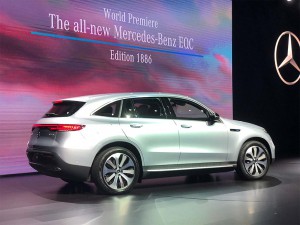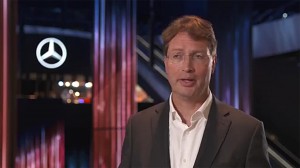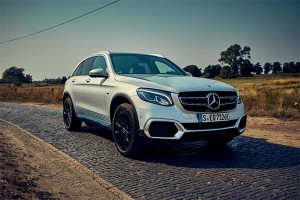
Mercedes revealed the U.S. version of its first long-range EV, the EQC Edition 1886, in NY last month.
The automaker that effectively brought the internal combustion engine to life appears ready to drive a nail into its coffin.
Daimler AG, the parent of the Mercedes-Benz and Smart brands says it expects plug-in hybrids and pure battery-electric vehicles, or BEVs, accounting for fully 50% of its sales by 2030, with a goal to go completely “carbon neutral” by 2039.
“One of the defining issues is how we address our CO2 footprint,” Ola Kallenius, Daimler’s next CEO, said during a conference in its headquarters city of Stuttgart on Monday morning.
“Let’s be clear what this means for us: a fundamental transformation of our company within less than three product cycles,” Kallenius added, explaining that “We aim to have a carbon-neutral new passenger car fleet in 20 years,” as part of a strategy being dubbed “Ambition2039.”
The automaker already has 10 plug-in hybrids, or PHEVs in its fleet and has begun the development of an equal number of long-range BEVs. The first, the EQC, officially went on sale last week in Europe, starting at 60,000 euros, or just over $67,410. The automaker has not announced U.S. pricing for the all-electric crossover. It won’t cross the Atlantic until next year, though the automaker showed off the initial American version, the EQC Edition 1886 at the New York International Auto Show last month.
(Mercedes begins taking orders for the new EQC battery-electric vehicle. Click Here for more.)

Ola Kallenius, who turns 50 in June, becomes Daimler CEO next month, replacing retiring Dieter Zetsche.
That name references the year Daimler’s founders, Carl Benz and Gottlieb Willhelm Daimler, independently developed what are credited as the first automobiles powered by internal combustion engines. The announcement of Ambition2039 appears to suggest the company is now planning to move away from that technology.
“It’s clear that the end of the road for the internal combustion engine is in sight,” said Helen Clarkson, CEO of the international environmental non-profit, “The Climate Group.”
Like its key German rivals, Daimler was slow to embrace electrification, until recently focusing its efforts to trim CO2 production on high-mileage diesel engines. At their peak, earlier this decade, “oil-burners” accounted for more than half of overall European sales and were gaining traction in the American market, especially in the luxury segment. But the emissions scandal that enveloped Volkswagen in 2015 – with Daimler also being accused of bending its numbers – has led to a wholesale shift away from diesel technology.
Daimler has committed billions to develop new electric vehicles, and to update factories to build both batteries and electrified vehicles. That includes $1 billion on a BEV production site for the U.S. Last December, meanwhile, it said it expects to spend 20 billion euros on batteries alone by 2030 –about $22.5 billion at current exchange rates.
(Collectively, German automakers BMW, Daimler and Volkswagen will invest $45 billion on battery technology over the next three years, according to a report released by the VDA, a German auto trade group, in March 2019.)
(Mercedes takes the lead in U.S. luxury car sales. Click Here for more.)

The hydrogen-powered Mercedes-Benz GLC F-Cell shows Daimler is looking at various green alternatives.
Daimler’s Kallenius said in his speech Monday morning that the automaker isn’t limiting its clean energy push to just battery-electric vehicles. It is continuing to develop hydrogen technology, as well. Fuel cell systems are sometimes referred to as “refillable batteries,” because they use the lightweight gas, in combination with oxygen from the atmosphere, to generate a stream of electric current that can be used to power the same sort of electric motors found in a vehicle like the Mercedes EQC. The only exhaust produced by a fuel cell stack is water vapor.
“There’s also room and need to continue to work on other solutions,” said Kallenius, pointing to the GLC F-Cell hydrogen car Mercedes has produced in limited numbers.
The company is also exploring the use of fuel cells to power some of the buses it builds. That approach could help address the chicken-and-egg problem the industry faces with hydrogen power, a lack of a refueling infrastructure. Proponents contend that bus and heavy truck fleets, working out of central depots or on fixed routes, would make it easier and more cost-justifiable to set up an infrastructure that could, eventually, also service passenger vehicles.
(Sales spiraling down, Daimler kills Smart brand in the U.S. Click Here for the story.)
Kallenius, who will take over from retiring Daimler CEO Dieter Zetsche next week, said the new focus on sustainability won’t be limited to the cars the company builds. It is already moving to use electricity from renewable sources for production of the EQC at an assembly plant in Bremen, as well as Daimler’s new battery factory in Saxony. It plans to continue shifting to green energy sources for its plants, he said, while also upping the percentage of recycled materials used in its vehicles.
